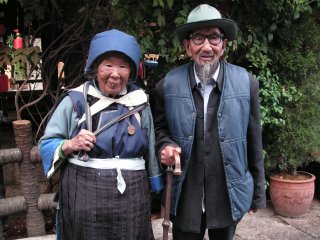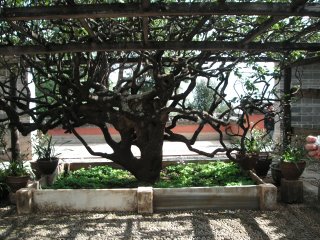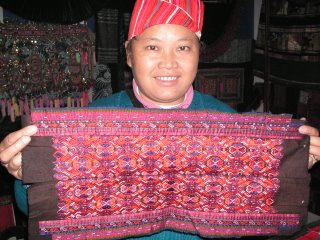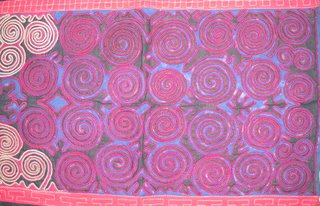
This picture is tribal reverse embroidery, I am unsure which tribe from the border of Yunnan province with Myanmar [Burma} which is only a little to the south. The spirals are a powerful symbol in many, many cultures and all of us who look at contemporary art quilts know how often they are used by our colleagues. I think it's very beautiful.
Usually when I return from a trip I can hardly think of anything but the wonderful images I've stored up that I want to keep and share with others. I have to bite my tongue not to talk constantly about my trip and wonderful incidents that may bore everyone else. But, of course, I never returned directly to a hospital. So i've been home a week now, and much of the China trip is just photos. I'm thinking much more about what I'm able to do for myself and how I'm going to make good use of this block of time that I will have here at home.
For ages I've mumbled that it would be a good thing to break my leg and have time to catch up on my reading. Moral: be careful what you wish for ... This is not analogous to winning the lottery, but just as there's the thought "if I ..." how would I handle the largess intelligently? I have a largess of time to read, write, quilt, rent movies, whatever. How to use it intelligently? First, of course, I must listen to my body, do as much as I can and not doing too much, pay attention to the physical therapists' rules about what I must not do -- the things that could pop the hip out of place. Heaven forbid!! Also I must listen to my own the recovery process. Rest when I need to rest, eat what my body wants, no more, no less, crunchy veggies when needed, the occasional piece of chocolate. The paying attention is a lesson that 35 years of hatha yoga makes almost second nature.
However I have started working on the "Migrating Monarchs" quilt which I hope will turn out well enough to enter in the Empire Guild's show in March. I had cut and putting together a dozen or fifteen butterflies before the trip but they needed to be appliqued to the batting. So I am doing that and embroidering the distinctive black markings, and the white spots that some have. This is very labor intensive. I'm lucky to have time to do it. I need to make at least a dozen more. As I realize just how long each butterfly takes and that many steps remain once they are embroidered, I am glad I have this time. I set myself a goal each morning and get to work. I have doubts as I work that the whole will meet the picture in my mind. It is not my nature to be a total perfectionist -- in fact it is my nature to be on the sloppy side. I'm fighting those impulses. I will definitely finish the quilt -- and perhaps only then decided if I want to show it. I have other quilts I have not shown in public that I can show as a back up. But the current project always seems the most fascinating and promising.
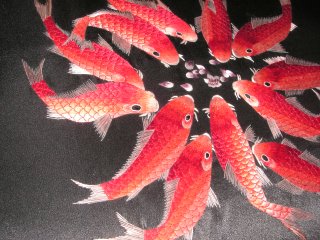
It's entirely different but, in a sense, this Chinese embroidered picture of fish, reminds me of my vision for the Monarch quilt -- I love the grace of these fish. It is a common design that I saw several times in China but I did not grow tired of it; I find it balanced and beautiful. Although my monarchs will be flying away, not gathering around a central point, I hope they will have the dynamic organization and emotional appeal that this fish design has.
This post rambles and doesn't offer the point of view I hoped to accomplish. I think the mind echoes the body's need for adjustment in new and unusual circumstances. I have always found it fascinating to watch the mind-body interactions in so far as one can get through the subjectivity. So no apologies for rambling but I hope I have been coherent.
